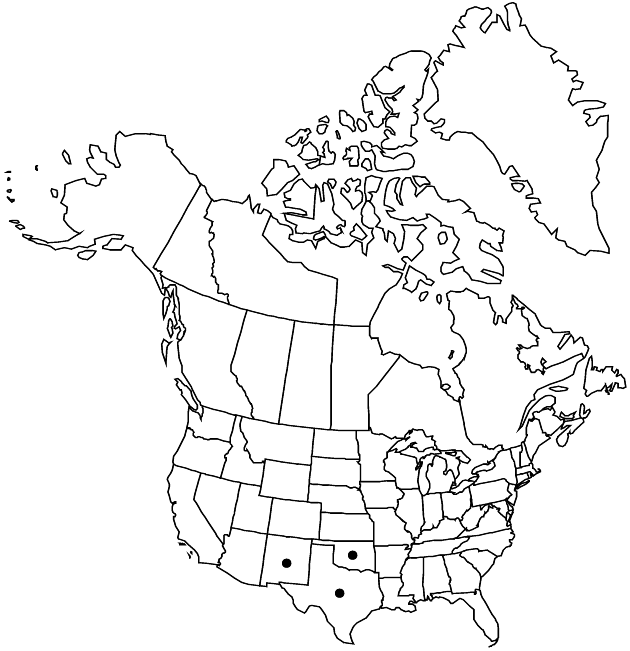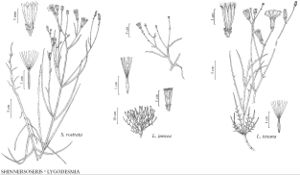Lygodesmia texana
Fl. S.E. U.S., 1315. 1903.
Perennials 25–65 cm (in clumps); taproots thick, fleshy or woody, rhizomes spreading. Stems erect, green, stout, branched from bases and distally, weakly striate, glabrous. Leaves (basal forming rosettes, sometimes withering before flowering) proximal blades linear, 100–200 × 1–8 mm, margins of usually pinnately laciniately lobed, lobes remote and narrow, 1–15 mm; cauline similar, 5–10 mm, reduced to scales distally. Heads borne singly. Involucres cylindric, 18–25 mm × 5–8 mm, apices narrow. Calyculi of 8–10, ovate bractlets 1–3 mm, margins ciliate-tomentulose. Phyllaries 8–10, linear, 18–26 mm, margins scarious, apices appendaged, faces glabrous or tomentulose. Florets 8–12; corollas usually pink, purple, or lavender, rarely white, 35–40 mm, ligules 5–6 mm wide. Cypselae 11–17 mm, faces smooth, adaxial not sulcate, glabrous; pappi 10–15 mm. 2n = 18.
Phenology: Flowering Apr–Sep.
Habitat: Rocky, calcareous, alkaline soils in oak-juniper woodlands, mesquite brushlands, open grasslands, red sandy soils, roadsides
Elevation: 100–1800 m
Distribution

N.Mex., Okla., Tex., Mexico (Coahuila)
Discussion
Lygodesmia texana is easily distinguished by its laciniate-lobed basal leaves that form rosettes in younger stages, relatively large involucres and florets, phyllaries with an apical appendage, and smooth cypselae. It is closely related to L. aphylla, which has a more eastern distribution, lacks laciniate leaves in rosettes, and has sulcate cypselae. Lygodesmia texana apparently hybridizes with L. ramossisima in trans-Pecos Texas, and the two species can be difficult to distinguish (A. S. Tomb 1980).
Selected References
None.
Lower Taxa
"fine" is not a number.
